You’re listening to Burnt Toast!
I’m Virginia Sole-Smith. Today I’m chatting with Angel Austin and Ani Janzen from the Association for Size Diversity and Health.
ASDAH’s purpose is to create the conditions for people of all sizes, particularly those most impacted by systemic anti-fat bias, to have equitable and barrier free access to the care and healthcare resources we need to support our well-being. ASDAH educates health care providers about medical anti-fat bias and advocates for health care that aligns with the Health at Every Size approach. You’re probably familiar with the term Health at Every Size or HAES. Angel and Ani join me today to talk about how HAES has evolved over the years and what it has gotten wrong—and what their new framework of care for Health at Every Size looks like.
If you have struggled with questions about Health at Every Size—and about weight and health in general—I think you will learn a lot from this episode.
With the help of paid subscribers, Burnt Toast supports ASDAH with monthly donations, and both Ani and Angel asked me to donate their honorariums as podcast guests today to ASDAH as well. But if you find this conversation valuable, we would love for you to support ASDAH directly. Donations help them to continue to develop Health at Every Size curriculums for higher education institutions, and medical schools, and to build out their HAES provider database, so we can all find weight inclusive health care providers near us.
PS. If you’re enjoying the podcast, make sure you’re following us (it’s free!) in your podcast player! We’re on Apple Podcasts, Spotify, Stitcher, and Pocket Casts! And while you’re there, please leave us a rating or review. (We like 5 stars!)
Episode 148 Transcript
Angel
I’m Angel Austin and I am the advocacy and community leader for ASDAH. I started out on the board, and eventually ended up where I am today as advocacy and community leader.
I just really love working with the organization because it’s in such alignment with my life, and my purpose. I also run Sacred Space for Fat Bodies, an organization I created just because I needed self-care experiences that weren’t accessible to me in the world, because I’m an infinifat person. It was in the heart of the pandemic, though, so I had to take a hard pivot and start providing that space online. It was through doing that that I learned more about ASDAH and came to be involved with that work.
Ani
And I’m Ani Janzen. I’m the ASDAH operations and projects leader. I have been doing fat activism and Health at Every Size advocacy work for about ten years. And I actually started it with my own organization locally in the Twin Cities of Minnesota, the Radical Health Alliance. My very first foray into activism was community organizing and creating what we call the Twin Cities Fat Community, which is now over 1,000 people strong and has been going for like seven or eight years. I started with ASDAH back in 2018, on the board of directors, and have participated in much of the transformation that you’ve seen.
For those of you who have followed along with ASDAH’s journey, we used to be a completely volunteer led organization. That factor in addition to other factors created an atmosphere where those with lots of privilege ended up being the decision makers and leaders of the org, because who has time and energy to volunteer their labor? It tends to be focused on the more privileged end of the spectrum. There was a moment in ASDAH’s history where there were almost no fat people on the board. That just really struck me as an issue, as a fat person. I had never really imagined myself in that kind of role before, but I had to put myself out there. I wanted to see what could happen. I feel very privileged to have gotten to work alongside the folks that have really put Black, superfat and other BIPOC and multiply marginalized folks at the forefront of our organization.
Virginia
We are here to talk about the new Health at Every Size framework of care which ASDAH released a few months ago. But before we get into where we are now, I do want to back up a little bit and talk about how Health at Every Size originated.
I mean, for myself, learning about the initial HAES framework was one of my first steps out of diet culture. HAES is an entry point for lots of folks. But that doesn’t mean it has always been the right entry point, or the best version of itself.
Ani
Health at Every Size has very long and complicated history. We really trace our lineage back to the 1960s and 70s for what specifically became the the ideas of Health at Every Size. It’s really important to remember that there have always been counter narratives to what it means to be healthy, what it means to be fat, and beauty ideals. And a huge portion of these ideas existed before they became codified into Health at Every Size, particularly in Black, disabled, superfat and infinifat communities. Those conversations were happening probably eons before The Fat Underground kicked off what eventually became what now exists as Health at Every Size.
But back to The Fat Underground, they started in the late 60s and 70s. This was a form of activism that came out of all of the civil rights unrest of that era. These activists saw the need to be talking specifically about body size in addition to other oppressions that activism was becoming more organized around during that era. So The Fat Underground talked about a lot of things related to fat and fat activism, but one of the things that they were very critical of was the medical industrial complex, which is what we call it today.
At that time, and still today, fat folks were not getting proper treatment, not getting medications, not getting care beyond being told to lose weight. So The Fat Undergroundd pushed back against that and raised awareness about why this was a problem. Then over time, as we get into the late 70s, the 80s, and the 90s, we see a lot of health care professionals start to learn from these folks, start to pick up pieces of this and more organization starts to happen.
And eventually, folks start to say, “We need a term for this. We want to name this in some way.” And Health at Every Size is the name that came out of that conversation.
Initially, there was no specific organization. ASDAH didn’t exist at that time. We were established in 2003. So there were several versions of what they called the Health at Every Size approach, or Health at Every Size tenets. I think I have a historical account of at least three or four different versions of these through that that time period. But what’s really notable about the 80s and 90s and the early aughts is that the life enhancing movement principle and the eating for wellbeing principle started to become synonymous with Health at Every Size.
The other three principles, which were more focused on access and breaking down systemic barriers—those kind of got lost in the mix. I think that was due to a lot of factors, but one of the big ones was that what was publishable, what was easily consumable by the mainstream, was the principles of “eating for wellbeing instead of weight loss control,” and “life enhancing movement instead of weight control.”
Virginia
I have to say, I think I’ve been complicit in that, as a journalist covering this. Intuitive eating, joyful movement —those were the stories I could get editors interested in and the other pieces of the conversation for so many reasons felt like a harder sell. Angel, is anything you want to add to this?
Angel
As a person coming in new to this, it’s been really interesting to see the shift and even to learn the history. It just kind of blew my mind. I know it’s going to be an ongoing education. I’m excited to see the world learn, but it’s an ongoing education even for myself.
Virginia
Talk a little bit about what inspired this. What were the big things you wanted to change when you sat down to re envision the framework?
Ani
We knew from the get go, that it was problematic to have “eating for wellbeing” and “life-enhancing movment” raised to the level of being called a principle. My personal fat activism journey, I was very lucky that even though Health at Every Size was also one of my early entry points to this work, I very quickly got plugged in to the world of folks like Cat Pausé and Deb Burgard, who were integrating the more radical liberation ideologies into their work. My introduction to Health at Every Size was Lindo Bacon’s book Health at Every Size. That really pushed me to go further and deeper.
So I had been thinking about and trying to reconcile the healthism that comes out in the advocacy of Health at Every Size and how I still felt that there was a core to what Health at Every Size—where it came from, and what it stood for—that was still valuable and important.
As someone who was going through a health care education to become a dietitian, and then eventually a public health professional, I knew that change needed to happen in these spaces. I felt that Health at Every Size could and should still have a role in that. But I was also hearing and trying to integrate these arguments about isn’t Health at Every Size healthist and a lot of the other critiques about Health at Every Size, which honestly kind of ended up landing on those two principles of eating for wellbeing and life enhancing movement.
So one of the things that really guided our work was going all the way back to the basics. What does it mean for this to be a principle? So we literally looked at the definition of what is a principle, and we could no longer stand on the ground that those two were principles. They were not applicable to every single fat person’s pursuit of adequate care and well being.
Virginia
Can you say a little more about that? Or Angel, feel free to jump in! What about those concepts are not applicable to every fat person?
Angel
We’re talking about eating for wellbeing and joyful movement. It’s problematic because of the discussion around food and how that’s generally applied when it comes to fat people. And then, joyful movement. I think around movement, very honestly, sometimes it’s not joyful. Especially for very fat people, superfat and infinifat people. It’s something that has been problematic and has been used in harmful ways in the past for us. Feel free to add, Ani.
Ani
I think there’s a lot of nuance that has to go into both of those in a very individualistic way. If health is not a moral pursuit, if health is not what makes you a good person, then no one has to pursue eating for wellbeing or life-enhancing movement in any way, shape, or form, whether that’s for weight control or not.
If health is not a moral obligation, then does anyone need to pursue any healthy behaviors in order to be worthy of and deserve access to care through the healthcare system or through any, hopefully, future care system that we envision and create in the future? And the answer to that for us—after listening and learning from so many liberationists, specifically not Health at Every Size advocates, but liberationists—was no. People can pursue anything in their life. And no matter what happens, they’re still deserving of care and treatment and wellbeing through through what is currently our healthcare system. We hope to see that obviously change in the future.
Angel
They fall too perfectly into some sort of morality, like Ani was saying. Eating for wellbeing—it’s just a slippery slope. So we just wanted to get that removed and the possibility of that situation happening. I can speak for myself, when I talk about eating for wellbeing or joyful movement, it does put me back in the mind-frame of the days that I did use both eating and joyful movement to do severe damage to myself and my body. That’s something that we don’t ever want to support or provide for the community.
Virginia
I think that’s such a powerful reframing for folks. And I hope for folks listening, it feels liberating to think “Oh, I don’t have a moral obligation to love moving my body.” You can’t force people to love things or force people to eat in certain ways. You can see so quickly how, even though it felt like it was reframing, that was a response to diet culture. It still has that control element to it.
So okay, so those two are off the list of principles. Now talk to us about the new principles? What are we looking at now?
Ani
Our new Health at Every Size principles—we have four now instead of five. And of those four, I think they’re still really reflective of the original spirit of the earlier versions of the principles. But we did want to make sure that like certain things do not get lost in the conversation.
So our principles are:
Health care is a human right for people of all sizes, including those at the highest end of the spectrum.
Care is fully provided only when free from anti-fat bias and offered with people of all sizes in mind.
Wellbeing care and healing are resources that are both collective and deeply personal.
Health is a sociopolitical construct that reflects the values of society.
Virginia
Okay, so healthcare is a human right for people of all sizes. I think we’ve touched on that a little bit in terms of, eating and exercise cannot be things we have to do to earn access to health, right?
This feels like the core of a lot of anti-fatness. When I go out into mainstream media outlets and talk about these things one of the most common troll responses is the “this is a drain on our healthcare system” myth. So how are you finding that principle is being received specifically from healthcare providers, who we know have such high levels of anti-fat bias kind of built into the profession?
Ani
I think most healthcare professionals got into their fields because they wanted to help people and it gets lost in the interpretation and the execution of care. Healthcare actually creates the barriers for people to get to get appropriate treatment.
Virginia
I’m just thinking of different doctors I’ve interviewed over the years, or who send me long emails after they read my work. There’s this perception of “the non-compliant patient,” which is really hard to get people past. This feels like the core mindset shift that needs to happen. Why is there even an idea of compliance? Why is the healthcare system something we comply with, we have to be obedient to? It is such a such a wildly negative framing.
Ani
And what counts as compliant or not compliant is so incredibly biased based on mainstream ideas of what is acceptable behavior. So you’ll notice no doctor is mad at the patient who comes in after a car accident, right? No doctor is saying you all should stop driving cars, even though accidents and injuries are one of our biggest causes of death. We’re not shaming them because they got into a car. We’re not denying them care or surgeries because they were in a car accident.
So when we start to unpack that a little bit, we start to very quickly see the double standard. We consider athletes to be so healthy, but a lot of what they engage in is really dangerous activities that put their ACLs at risk, their elbows at risk, their shoulders at risk. For football, head injuries.
Some people have spoken out about some of these things, especially the head injury risks to kids. But by and large as a society, we have just accepted sports as a totally good and appropriate behavior. And I’m not saying that we shouldn’t accept these things as just normal parts of our society, because they are.
But when you start to realize that living life is a risk and no one is asking people to stop doing those other things, it becomes kind of absurd that we would ever consider denying care to someone. Even if we could prove that they control their body size—which is a whole other conversation—but even if that were the case, why would we deny someone care because they have undertaken things that might not be 100 percent healthy?
Angel
I was just thinking about some of the things that are happening in the world right now in our community. One of those is something that we covered recently, in one of our events, was the Obesity Bill of Rights. And I was just thinking about the long list of people that have come in to support that and how I would just love to have a moment to share our principles or to think of ways to get this in front of them.
Because at its heart, I get what they’re doing. Classifying quote, unquote, obesity as a disease—I get it. But there’s still so much bias steeped in that work and it’s so insidious. It’s frustrating because it’s still about, “I’m fat, I’m broken, I’m wrong, fix me.” And what our principles say is that no matter who you are, you’re a human being, you exist, you deserve care.
I’ve had situations in my own life where I’ve been treated horribly, obviously. Imagine having an ambulance called for me because I had whatever happen, and they were like, “Well, we can’t help her because she’s too fat.” Or we can’t put her in the ambulance because there’s no way we can, you know? I’ve had to undergo some wild stuff to get into an ambulance in my body. But they got me in an ambulance and this type of thing happens a lot in ways that are so harmful to us, as individuals.
I’m just so glad that our principles are in the world and that we can continue to figure out ways to express the concept of healthcare is a human right, for any human no matter who they are, whether they are a football player that’s in perfect health or a fat person who can’t get out of the house or whatever.
No matter who you are, no matter where you exist on that spectrum, you deserve to be cared for. And to get the care, you need, not just to be accommodated, but to be cared for now, in a way that is affirming to you. And it’s just real tricky. It’s nuanced. But I’m just really glad it exists in the world.
Virginia
That distinction you’re making of not just be accommodated, but to be cared for—that feels so crucial. I mean, it’s so obviously not health-promoting if someone can’t get in an ambulance. Clearly, access to healthcare is being blocked in that situation. It’s enraging. So I really appreciate you sharing that and emphasizing that distinction, because I think that’s what I also encounter when I’m talking to medical professionals either personally or in my work as a journalist. They’re kind of like, “well, if we have to get out the bigger blood pressure cuffs we will…” as opposed to, “we are thinking about how to build healthcare to welcome all people.” That’s such a different framing.
Angel
We talk about this a lot in disability activism as well. I saw a video of this gentleman who was in a wheelchair and essentially, he was calling out folks who had developed a conference he attended. He’s like, “I thank you for the ramp. I really appreciate that you allowed me to get into the building. But then what happens once I get here? How am I made to feel once I get inside the building?”
I think that is at the heart of what we’re moving toward with the revision of these principle. It’s not just let’s get you in, get you through the doors. It’s how do we treat you in a compassionate way? And give you all that you need as a human and meet your needs once you get through the door?
Virginia
And recognize that you are the expert of your own body. That you are not just a problem to be solved, but a person who knows what they need and needs to be listened to, as an equal partner in the health conversation.
Angel
Exactly, exactly. That I can tell you what I need and that what I tell you has value. And I’m not to be dismissed, you know? When a person tells you what they need, we need medical professionals to hear and to not just kind of blow us off. And I just think that that’s a huge part of what it is that we’re trying to do. It’s not just have the right size cuff, but all of the layers, you know? All the points that we want people to understand and speak to. Human rights and healing, wellbeing, care and healing, are resources that are both collective and deeply personal. You can’t treat somebody and not treat them as a person. You can’t treat just a physical being. You have to treat them where they are and give them what they need in a more full way, more encompassing way.
Virginia
What you’re saying takes us back to the fourth principle: Health is a sociopolitical construct that reflects values of society. So much of what’s going wrong here is the way we are currently defining health. I would love if you all could talk a little more about the current definition of health and how that needs to change.
Ani
Our current ideas of health in our mainstream society have really influenced our current health care system, which would include the research and the professional organizations that create recommendations that influence healthcare practice—all of those things together, are the medical industrial complex.
And the ideas about health that come out of these systems are highly individualistic. There’s a belief that you either create good health for yourself, or you create poor health for yourself. On the other side of that coin, you have the solutions to your health conditions in your own hands, since it’s an individualistic pursuit to heal yourself as well, which is healthist. That term healthism, the definition of it is that we create health as something that is completely an individualistic pursuit.
And this is appealing, right? It is appealing to think that we can prevent healthcare issues. That we can control our fate as human beings and that we can control adverse events that are happening in our lives. It is not fun to think that you might be going down a health condition path that doesn’t have a resolution or solution.
Unfortunately, the reality of a lot of healthcare conditions, especially in today’s world where we have cured a lot of the more acute stuff, or we have good solutions for, that is that we end up with chronic disease. That’s the thing that happens when a society gets to experience aging.
So on one hand, it’s a really good thing as a society that we have gotten to that point in medicine. And on the other hand, it can be really frustrating to live decades of your life with a chronic illness, pain, or condition.
For us, this principle was important to name so that we can continue to push back on those individualistic notions of health and well being. But you can see in our other principle, we also name that wellbeing, care, and healing are deeply personal. Each individual comes with our own experiences, culture, values, belief systems that influence what it means to us to pursue wellbeing care, healing or health.
Virginia
I mean, I was just thinking about how many different health things in my life I have assumed that I could personally solve. Like, I can figure out the cause of my migraines. I can figure out what to do about my knee pain. That’s just where we’re trained to go. It’s a really radical mindset shift.
Ani
It takes a lot of practice to make that mindset shift and to also realize that that mindset shift does not mean that we’re throwing out all of medical science’s accomplishments over the many, many decades. It doesn’t mean that we think antibiotics don’t serve an important purpose.
Virginia
We love vaccines, we love medicine! But what a difference it would be if rather than thinking, “I have to go on a personal odyssey to solve this and if I can’t keep up with my exercise or my eating it’s my failing,” if instead, we could say “This is happening to me because I’m part of this larger society that’s not supporting individual care.” If you could recognize the system in play. Again, I think it’s quite liberating because you realize it’s on on me that we all deserve something different and better here.
Angel
It’s more tools in our arsenal to be able to manage all of this that we might not have had before. More language, more things, more ways that help us ask the questions that we need to ask, so that we can get the care that we need.
Virginia
Okay, I know this question will come up for listeners: Eating well and joyful movement are no longer in the framework as core principles. How should we think about those concepts as individuals, but also as a larger system?
Ani
What we heard from the people who are most harmed by medical anti-fat bias was, “Hey, these ideas about eating and movement were some of what helped me on my journey to experience wellbeing for myself.” And there was worry and consternation about whether or not these would still be embraced by ASDAH and Health at Every Size.
So it was important to make sure that there was a space for these things in the greater scheme of what it means to either offer Health at Every Size care or pursue Health at Every Size wellbeing for yourself. So in our framework, we have a section called “tools that support wellbeing and healing without contributing to oppression.” And under that aspect of the framework is where we see eating for wellbeing and life-enhancing movement to have a home.
Virginia
So it says: “Relearning tools coopted by the weight loss industry like nutrition and physical activity, as well as learning the tools to help our patients reframe their relationship with food and movement in alignment with their values.” It’s putting them in their rightful place. They were the whole story before.
Ani
I really liked that we call them tools now, right? You don’t pick up a hammer for every job that you need to get done. But sometimes the hammer is useful. So that, to me, is what eating and movement are. Sometimes, for some people, in some circumstances, these are useful. But not always, not universal.
Angel
I think the core of it is autonomy, too. Like I have control to do what I want to do, when I want to do it, how I want to do it, as I deem necessary.
Virginia
When you talk about autonomy, when you talk about tools: Is there sometimes a place for intentional weight loss for folks who decide that’s the right answer for them? How do you think about that?
Ani
We are here for all fat people to access care, and that includes people who pursue intentional weight loss.
If we get into the more nuanced part of that conversation, which is, is there a role for a Health at Every Size health care provider to support weight loss pursuits? I would say that there is room for a lot of different philosophies and approaches under that question. The thing that there is not room for is pushing weight loss, uplifting weight loss as the solution, or using weight loss or the BMI as a gate to access other forms of care. Those things I think I can categorically say there is not room for. I’m trying to think of a nuance there.
Like, weight does matter in certain things, right? We need to prepare appropriate starting dosages for anesthesia. Weight influences how you might get care, but it should not decide whether you get care.
That said, with the rise of Wegovy and other weight loss drugs, as well as the ongoing offering of bariatric surgeries, that is where I think that our future trainings are going to help providers come to grips with what they personally feel is their ethical path to helping patients in the future.
I think that because our current system is so problematic, there’s not an easy answer to this. We know that many people are trying to pursue a surgery that they consider elective, but what exactly is an elective surgery? And when it’s elective like that, they can put a lot more gates up, and oftentimes they put a BMI restriction up.
So what happens if you have a transgender patient who is five pounds from the cut-off that would get them access to gender affirming surgery, and they are currently in a body that creates such profound mental health issues? You have to balance those things on an individual basis. This is where we can lean back onto our tools. We have informed consent. So we’re going to tell that patient what can they expect with the various options that exist for weight loss. We’re going to be real with them that you might lose weight and you might gain it right back. But that might serve that client’s purpose perfectly, to get them care in their insurance network. So I don’t think that there is a clearcut answer to that question.
I think that for some providers, their ethical alignment might have to be that they refer that patient somewhere else for weight loss services. But I think that there’s room for a Health at Every Size professional to prescribe a GLP-1 or assist with a lifestyle—big air quotes around all these terms—intervention.
Virginia
That is helping me think through some some sticking points I’ve been having in my own brain. Angel, anything you want to add to that?
Angel
No, I’ll totally concur. It’s so subjective. And to have a blanket answer just doesn’t serve anybody.
Virginia
And it’s a mistake that some Health at Every Size folks made in the past, right? Was to be too never, never, never weight loss, to the point of ignoring these nuanced situations.
Angel
Well, it’s a problem too, in the community. With regard to activism, I’ve seen it happen where a person wasn’t even trying to pursue weight loss, lost weight, and was simply kicked out or canceled, so to speak, because their body changed. And I’ve been called out for even saying that fat people should be able to move and enjoy the benefits of movement.
Because we’re so programmed, even the people that are in the work are so programmed to see it as such a bad thing that your body changes—it can change in any way. But can you be open to what those changes mean? And understanding how they happen at a high level instead of deciding what it is based upon the information that we’ve been programmed to believe.
Virginia
It always confuses me how that isn’t so clearly just another form of policing of fat people’s bodies to get really worked up about those changes.
Angel
Yep. It’s changing though. I see that it’s very slowly shifting. And I’m grateful that ASDAH is in the mix. I think we really are on the forefront, and trailblazing.
Virginia
I know the framework is really designed as a roadmap for healthcare providers. But of course, a lot of us don’t live anywhere near a Health at Every Size doctor. How can we use elements of this when we’re advocating for ourselves in medical settings?
Angel
At ASDAH what we’ve been kind of grappling with over the last year and a half or so is streamlining our focus to who are we actually serving. I think what we’ve kind of come down to, what we’ve drilled down to, is the idea that we want to use this framework to support the people who serve the people that are the most oppressed and marginalized in the medical industrial complex. So, while we’re thinking about ways that we can create tools for both the health professionals that we serve, specifically and that also for the community that is served by these health professionals.
But our main focus is, with this framework especially, actually having something that they can use when they think about how they support their patients or clients or whomever it may be. I will honestly say that as much as I’m grateful for the revision of the principles, the framework is the most exciting part. The new framework is really exciting to me just because I haven’t seen anything like it ever. I think that is going to be a very important part of the work we do going forward, that that medical professionals can actually take and create treatment plans using. That’s what I hope that we are able to do in the future. What about you Ani?
Ani
I do think that one of the things that the framework can lend itself to is being used as a way to get ideas and language that a patient might not have had before. The reality is that there are a lot of healthcare professionals that have never even heard of Health at Every Size, but they might be semi or even fully aligned with what we stand for.
We do hope to create a very robust choice of Health at Every Size aligned providers. But if if someone is only searching for Health at Every Size providers, they might come up empty, especially if they are in the Midwest states and rural areas, right? We know that there are huge gaps. There are certain states that are not represented at all on our listing at.
But this framework could give someone some ways to develop questions to maybe find someone who is a little bit more closely aligned to the kind of care they want to receive. I think that people would actually maybe be pleasantly surprised to find the number—especially the new incoming doctors, they’re coming in with different lenses to this work. Even if they have not specifically thought about weight, size, and health or heard of Health at Every Size, they come with that practice of acceptance and inclusiveness and they see things just differently.
So that kind of doctor, when they’re approached by a patient who says, look, weight loss is off the table for me, they might get absolutely no pushback and they might get fantastic care, even if that doctor has never heard of Health at Every Size. So, hopefully that framework can give somebody some guiding questions to find a provider that’s aligned for them. Or even to be able to parse what they do get from their doctor. Maybe coming out of a doctor’s appointment, they might be able to take a look at that list and go the way the doctor approached this isn’t aligned here or here. As individuals, it’s really important for us to be able to throw out what is not useful to us because the world is not going to ever completely align with your individual beliefs or needs. Even amongst Health at Every Size providers, you’re going to have different levels of of approaches to things. So I think that’s another important way that somebody could use the framework is to just say, I’m going to let this piece of it go and I’ll take what’s useful for me and move forward.
Virginia
I love that because so often you come out of those appointments feeling like you had a rug pulled out from under you, right? The doctor was so certain that this thing needs to happen or this is the way it needs to be. To have this, to use this framework as a check in for yourself of wait a second, okay. They said I have to cut out whatever carbs, but let me filter that advice through this framework and see where I land with that. That’s super, super useful.
Butter
Angel
There are a lot of cool things that are happening right now in my life. But the one thing that gives me joy every day is my partner makes me a cup of this tea that is chai, lemon ginger, and peppermint. Yes, all three of those tea bags together in one thing. And I don’t know what he does to it, but it starts my day off so wonderfully. I love it so much. When I get off of this podcast, I’m going to have my tea for the day because I haven’t had it this morning. Every morning I just am so grateful for the way that tea just makes me feel.
Virginia
That’s so great. Ani, what about you?
Ani
Well, anybody who’s involved with ASDAH knows that I’m our resident reader. I’m always one with the books and the book recommendations. And I’ve been getting into fantasy lately. I read my first Brandon Sanderson, which, if you’re a fantasy fan, don’t come for me. I just read Tress, which is about a girl with really, really long hair. It’s a flipped fairy tale, so her love gets kidnapped by a witch and she goes off in pursuit, sailing like a pirate to go find him and rescue him and just has a ton of adventures along the way. It was written so beautifully, so creatively. Just a little, a little feminist fantasy fairy tale. So I highly recommend Tress.
Virginia
I don’t know Brandon Sanderson at all, so I’m not coming for you. And I think that sounds absolutely delightful.
My butter is carrot cake, which I have realized is my favorite cake. And this is surprising because I’m a hardcore chocolate person when it comes to desserts and sweet things. Like, I don’t have time for your like sour gummies. That’s just not my jam. But my mom made me the most beautiful carrot cake for my birthday a few weeks ago. And the great thing about carrot cake is when you have leftovers, it’s also like an excellent breakfast cake an excellent snack. It’s just a great every time of day cake. It was so good, so I’m going to shout out carrot cake.
Angel
Carrot cake is life. Let me tell you about carrot cake real quick. My husband’s mom, she passed in 2019. She made the best carrot cake. Her cake was so good that they were asking for the recipe at her funeral. They were like nobody has it? I mean, that is a problem. We still haven’t found it. But that’s how good at cooking she was in her life. My husband ate it all his life. And we’ve still not found a carrot cake that tastes like hers.
Virginia
I’m very stressed out about this for you now!
Angel
You’ll have to send me one of your mom’s.
Virginia
My mom uses The Silver Palate Cookbook recipe. She swears by it. So I have it. But I hope you find her recipe though.
Well, thank you both so much. I’m so glad to have gotten to spend this hour with you both. And I really am just profoundly grateful for the work you’re doing. I think ASDAH is such an important piece of the larger fat liberation movement. Thank you so much. We all benefit.
Ani
We’re on all the social medias: Instagram, X, Youtube, Facebook, LinkedIn. If you want to become a member, you get a bunch of member benefits. But if the benefits are not suited for you, which they’re not for everybody, please consider becoming a monthly donor. This is how we make our work happen. So we would love to have you as either of those or just as a community follower.
Virginia
Burnt Toast is a monthly donor and proud to be one. So I encourage everyone in the community to think about joining us in that. it’s really great work. Thank you!
The Burnt Toast Podcast is produced and hosted by Virginia Sole-Smith (follow me on Instagram) and Corinne Fay, who runs @SellTradePlus, and Big Undies.
The Burnt Toast logo is by Deanna Lowe.
Our theme music is by Jeff Bailey and Chris Maxwell.
Tommy Harron is our audio engineer.
Thanks for listening and for supporting anti-diet, body liberation journalism!

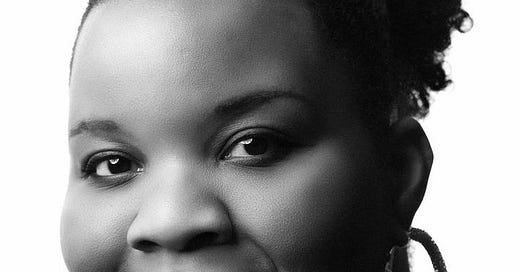


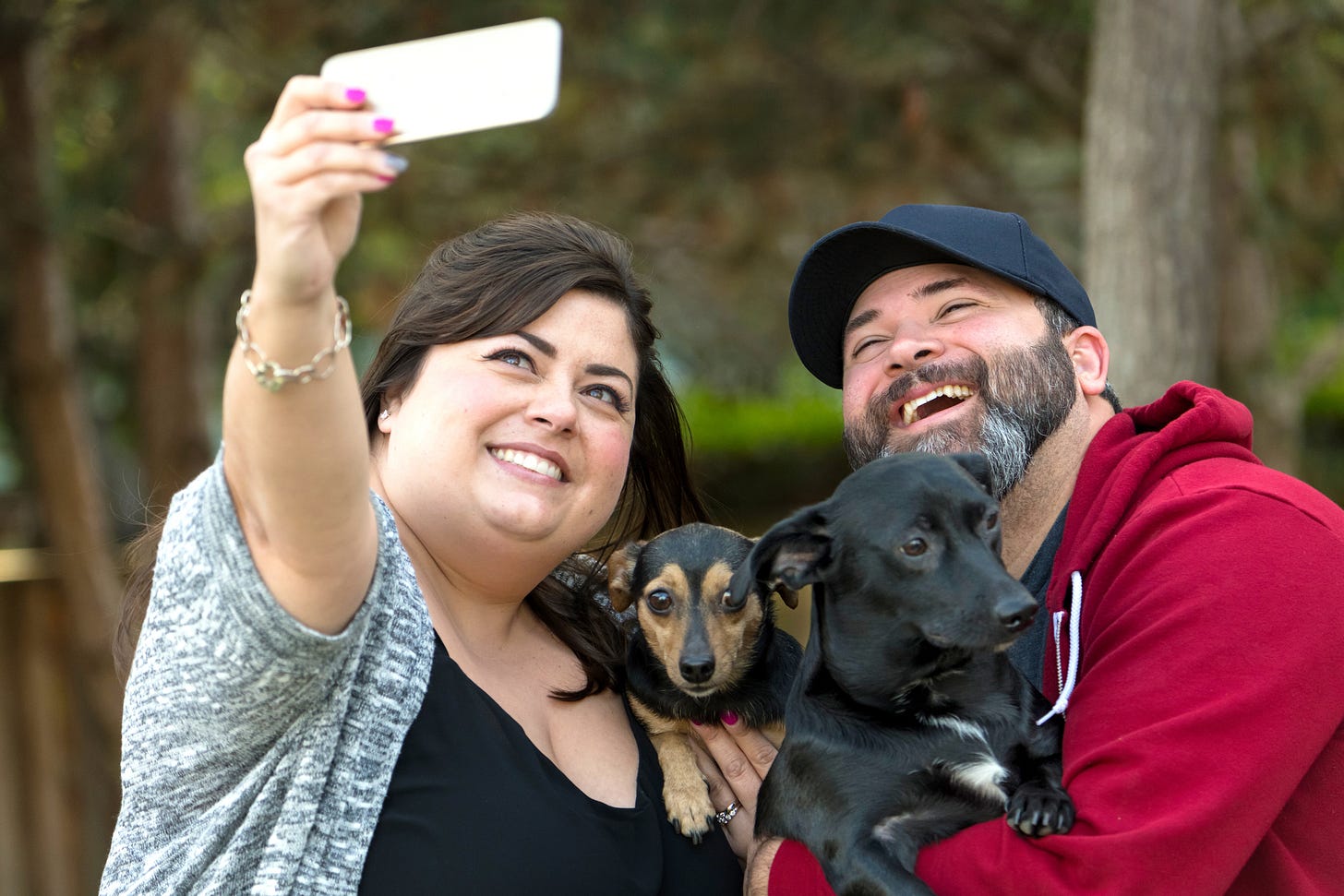

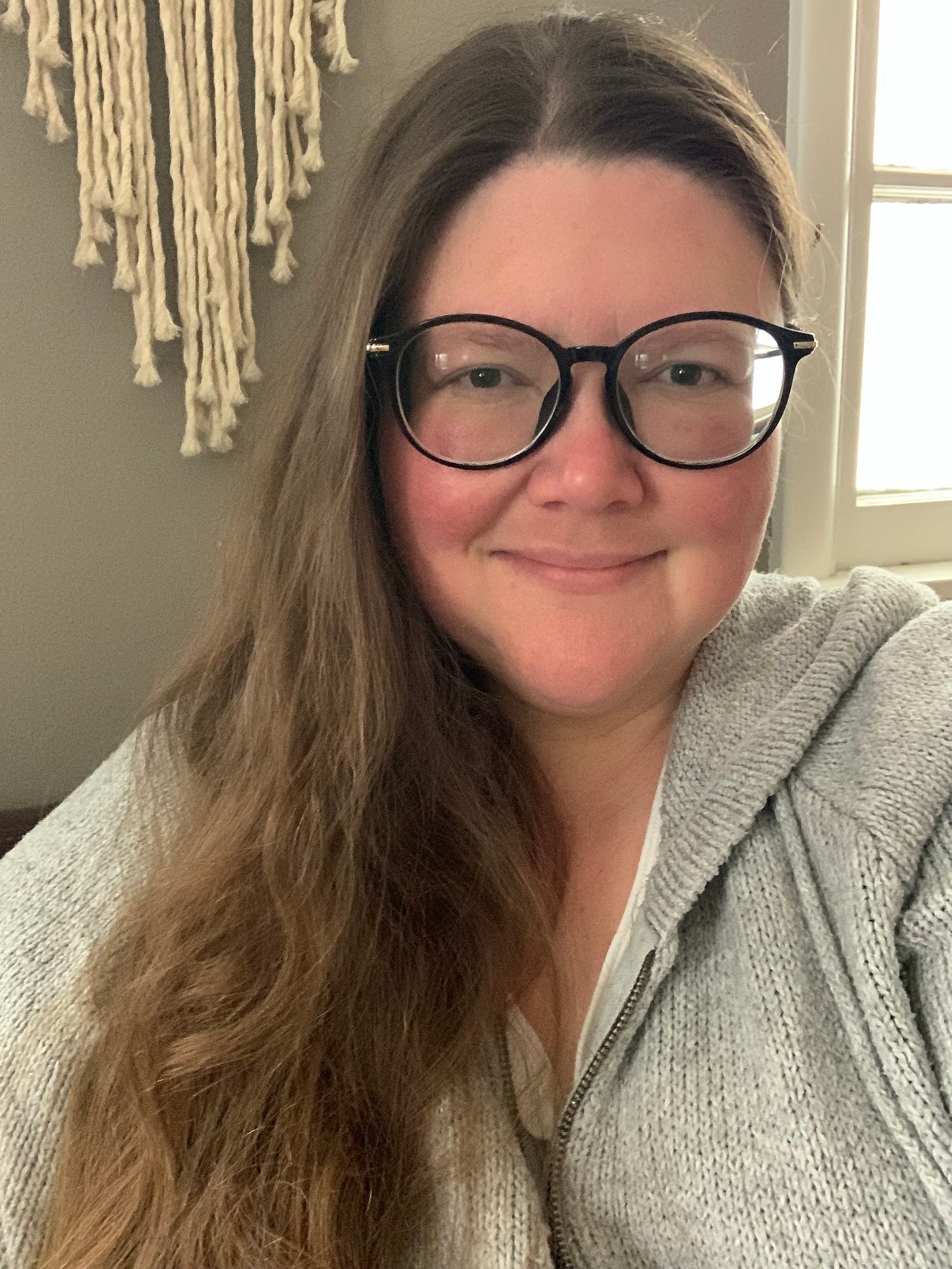
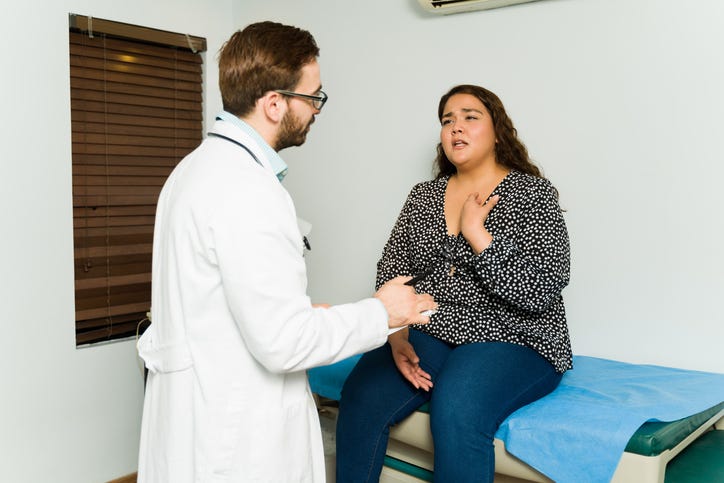





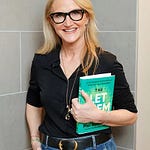
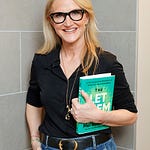



Share this post